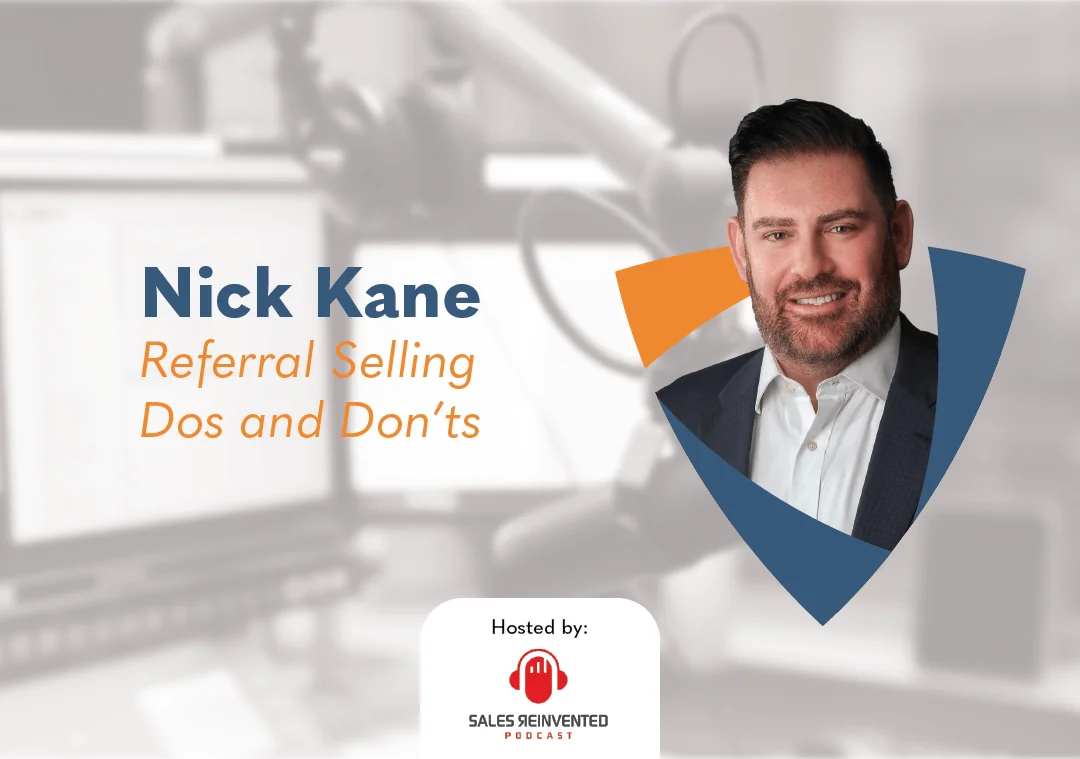Unveiling the Science Behind Stalled Deals

Vague excuses and shallow explanations frustrate all sales professionals. Surprisingly, sales leaders tolerate and perpetuate this frustration with the term stalled deals. Consider the scenario where a Mayo Clinic doctor casually attributes an illness to a mere “bug,” or a NASA rocket scientist dismisses an issue as a “glitch in the system.” When sales professionals characterize deals as stalled, they are vague and shallow. On the other hand, science-based sales methodologies rely on facts, evidence, and rigorous investigation rather than metaphorical statements. This article applies a scientific approach to tackle the persistent issue of stalled deals that hinder quota attainment.
The word “stalled” has a fascinating history and has evolved since its Old English origination in the 16th century. Originally, a stall was a compartment to place domesticated animals. When a horse pulling a wagon got stuck in the mud, it was “stalled.” In the United States, the word was popularized to describe “stalled” military actions. As sales professionals like to incorporate military terminology into their practice, stalled deals are now prevalent.
Early in my sales career, I vividly remember a defining moment with my first sales manager. After spending over an hour on a call with a new prospect, my manager asked a thought-provoking question: “How do you feel that call went?”
This question surprised me a bit, as I believed the call had gone exceptionally well, with the prospect showing genuine interest. I replied, “That was a great sales call, and it will be a big deal.” However, what followed left an indelible mark on my entire sales journey:
My manager, seemingly enthusiastic, paused briefly, allowing my confidence to swell. Then he asked, with a dry tone, “What’s the next step?”
I confidently replied, “He will confer with his team and get back to me—probably tomorrow. He’s highly interested.”
However, my manager’s response was far from what I anticipated. He probed further, questioning the prospect’s delivery schedule, budget allocation, decision-making process, other options they are considering and the identity of their previous solution provider.
As I struggled to provide detailed answers, my manager pointed out a crucial insight: my focus had been primarily on explaining product specifications, features, and capabilities, resembling the typical salesperson. To truly excel in sales, he emphasized, I needed to become a critical business problem solver.
Remarkably, my manager’s foresight proved accurate. The deal I had been so optimistic about ultimately transformed into a stalled deal, stretching over several months but never closing. This experience instilled in me a firm belief that delays are created because sales professionals fail to uncover critical business problems that their prospects urgently need to solve. At Janek, that became the philosophy behind our “Trusted Advisor” approach to selling.
The Scientific Method of Preventing Stalled Deals
A scientific approach to sales requires a systematic and rigorous approach to investigating and understanding each client’s unique business circumstances. A common element of all sciences is that their practitioners utilize precise and explicit language. Scientists strive to use unambiguous language to convey their ideas. This avoids confusion and misinterpretation. With that in mind, let’s define ambiguous sales terms that lead to misunderstandings and stalled deals.
Budgets
From my experience, when an organization attempts to solve a critical business problem, it is never conditional on a budget. Non-critical business issues always have a budget. Pigeonholing yourself into a non-critical category is a mistake that lengthens the sales cycle or creates stalled deals. Essentially, you are selling a commodity, and commodities often compete on price.
Alternatively, the client may be unable to afford the solution. If that is a fact, this is an unqualified opportunity and should be removed from the pipeline. If you were going to remove unqualified prospects from your pipeline, when would be the best time to do it? I would argue as soon as possible.
Curious or Committed?
The hard truth of sales is that buyers can be curious about your solution without being fully committed. This scenario can manifest in various ways, one of which is when the buyer seeks a second opinion. They require additional data, and once obtained, they either choose an internal solution or stay with their current approach (status quo).
Other reasons buyers can be curious but not committed include:
- A lack of confidence in the new solution.
- A lack of perceived value.
- Concerns about the implementation process.
- A preference for maintaining the status quo compared to the risk of doing something new.
With a scientific approach to selling, sales reps can employ specific strategies to address the buyer’s curiosity and move toward a commitment:
Build trust through evidence: A scientific sales approach involves presenting credible evidence to support the effectiveness and value of your solution. This could include case studies, data, testimonials, or research findings. By providing concrete proof of the benefits and successful implementation, you can address the buyer’s curiosity and establish trust.
Offer a proof of concept: To alleviate the buyer’s concerns and demonstrate the value of your solution, consider proposing a proof of concept. This allows the buyer to experience your product firsthand and assess its impact within their specific context. A well-structured POC program can provide tangible results and increase the buyer’s commitment.
Customize the solution: Take a scientific approach to understand the buyer’s specific needs and tailor your solution accordingly. Conduct a thorough analysis of their challenges, goals, and existing processes. By aligning your solution with their unique requirements, you can demonstrate how it can directly address their concerns, creating value and thus, increasing their commitment.
Facilitate knowledge exchange: A scientific sales approach values collaboration and fosters an environment of data sharing. Provide opportunities for them to share their data, and engage in meaningful discussions. A curious prospect will not share other the other decision-makers in the process, but a committed prospect will.
Acknowledge risks and uncertainties: Acknowledge and address any risks or uncertainties the buyer may have. This can involve discussing potential challenges, offering mitigation strategies, or providing guarantees or warranties. You can increase their confidence and commitment by demonstrating your understanding of the buyer’s concerns and showing proactive steps to mitigate risks.
By leveraging the above factors, sales reps can build trust and allow their prospects to make informed decisions. If you desire to be the top-performing sales rep at your company or the leading company in your industry, learning how to move curious prospects to committed clients is the best way to achieve it.
Loss of Control
Another common cause of stalled deals occurs when sales reps fail to establish or maintain control of the sales process. In such cases, they cannot effectively guide prospects and rely on the prospects to convince themselves. This approach does a disservice to the prospects, as it fails to address their actual needs and keeps them stuck in the research phase longer than necessary.
In our experience working with numerous organizations, we have not encountered a formal “let me think about it” stage in the sales process. Yet, this phrase is commonly used by prospects as a polite way to reject an offer. Instead of recognizing the truth and moving on, average sales reps continue to pursue these accounts with optimistic follow-ups via emails, voicemails, and LinkedIn messages.
For these sales reps, a significant portion of their sales career is insanely pursuing prospects who have rejected their solution but continue to receive attention due to misguided hope. The lack of control over the sales process and the failure to uncover the truth behind prospects’ hesitations contribute to the persistence of stalled deals.
Sales reps should prioritize three key actions:
- Regaining control.
- Streamlining their pipeline to eliminate waste.
- Reallocating their time to prospects with genuine potential.
When a sales methodology lacks a rigorous sales process, the sales reps are more likely to lose control. On the other hand, a science-based sales methodology is repeatable by others. This means the methods should be transparent and sufficiently detailed to allow others to reproduce the results independently.
In Conclusion
Stalled deals can be attributed to various reasons, but accepting shallow excuses only limits our understanding of reality. Factors like the economy, interest rates, personnel changes, or even the weather could be valid concerns. But they can also be prevented with a rigorous sales process. Preventing stalled deals requires rigorous honesty. Are we willing to lose the opportunities, or do we prefer to let proposals languish indefinitely? Sales leaders must critically evaluate if the time invested is worth the resources allocated.
Loose sales methodologies that prioritize sales activities tend to generate stalled deals. It’s essential to recognize that stalled deals often indicate a lack of engagement, readiness, or conviction from the prospects. In this context, trust plays a significant role. The less trust prospects have, the longer they take to make a decision. Trust is built on truth, and truth is rooted in science. Implementing a science-based sales methodology is the only remedy for stalled deals.
Finally, it is crucial for sales leaders to train sales reps to recognize that receiving an “early no” is far preferable to lingering uncertainty. The key to high sales performance is moving curios prospects to committed clients. By embracing a science-based sales methodology, proactively addressing trust, and laser-focusing all efforts on genuine opportunities, we can eradicate stalled deals and elevate our overall sales performance.

- Account Planning (11)
- Awards (49)
- Client Testimonial (37)
- Personal Branding (19)
- Podcast (11)
- Research (70)
- Sales Career Development (87)
- Sales Coaching (156)
- Sales Consulting (137)
- Sales Culture (170)
- Sales Enablement (354)
- Sales Leadership (109)
- Sales Management (248)
- Sales Negotiation (16)
- Sales Prospecting (125)
- Sales Role-Playing (18)
- Sales Training (235)
- Selling Strategies (263)
- Soft Skills (70)
- Talent Management (94)
- Trusted Advisor (27)
- Virtual Selling (49)
- Webinar (9)


























